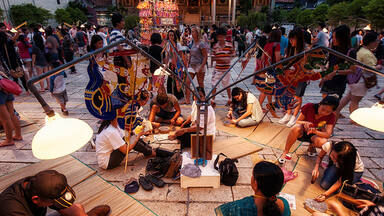Financed by the US Contribution to UNESCO, the US$250,000 pilot project for the documentation and conservation of Kabul Museum’s endangered collections produced inventories of objects that survived the years of war, trained staff in conservation techniques and restored objects destroyed by Taliban.
This pilot project, part of the UNESCO Programme for the Preservation of Endangered Movable Cultural Properties and Museum Development, was managed by the UNESCO Office in Kabul in close collaboration with the Afghan Ministry of Information and Culture and the Society for the Preservation of Afghan Cultural Heritage (SPACH).
Project Goals
The project addressed two immediate concerns of the National Museum of Afghanistan and the international community:
1) the need to document and inventory the collections remaining after the looting and destruction of the Museum during the civil war and Taliban iconoclasm; and
2) the need to improve the storage, conservation environment and the capacity of the Museum staff to safeguard the remnants of that national, movable cultural heritage into the future.
These goals were met through the implementation of inventories, conservation interventions and training exercises.
Electronic Database
An important component of this project was the creation of an electronic database of the Museum’s collections. A server and computer network was installed and training provided to ensure the sustainability of the database component of the project. It is the first electronic database of movable cultural property in Afghanistan. "That is a great achievement for a Museum that was without a roof until only a few years ago and in which there were few formal records remaining of what it had held in the past and no record of what it currently held," said Brendan Cassar, Consultant for Culture in the UNESCO Office in Kabul, who managed the project.
Restoration of objects destroyed by Taliban
The restoration and classification of the schist objects destroyed by the Taliban and scattered in thousands of pieces in the Conservation Department of the Museum was an ambitious part of the project that produced outstanding results.
Conservation and Training
Staff of the Conservation Department received intensive training on the techniques of conservation and restoration from the identification and placement of fragments to their final consolidation within the sculpture. Through this process the restorers and the staff were able to piece together a number of schist sculptures smashed by the Taliban and to classify fragments for possible future restoration.
Although the Kabul Museum is still in need of improved security measures and continued training of its staff, this project has made a significant contribution to its recovery. For more details on the implementation of the project, download the Final Report (April 2007) below.

